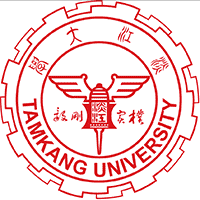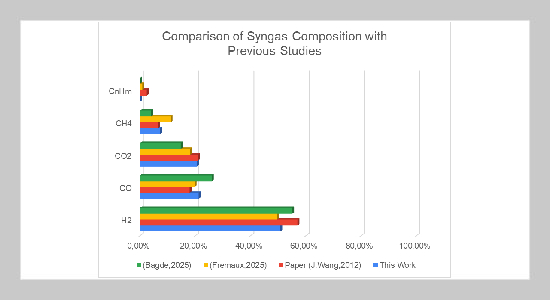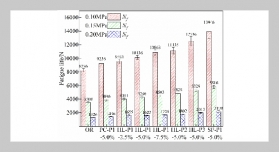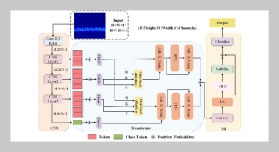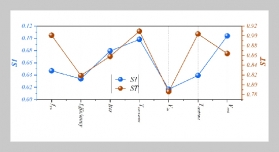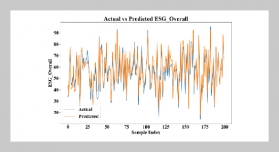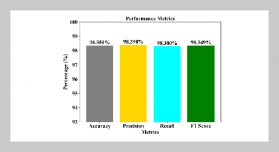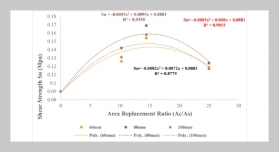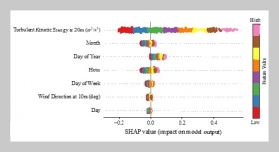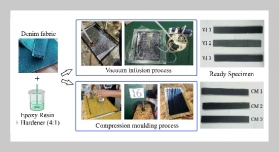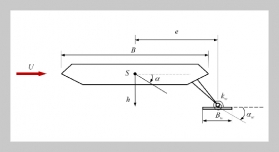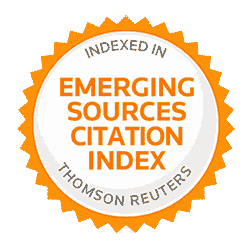- [1] M.-A. Perea-Moreno, E. Samerón-Manzano, and A.-J. Perea-Moreno, (2019) “Biomass as renewable energy: Worldwide research trends" Sustainability 11(3): 863.
- [2] N.Aklis, W. Wijianto, and N. Asmindra. “Numerical Simulation of the Effect of Particle Size Distribution on Fluidized Bed Gasifier”. In: 517. EDP Sciences, 2024, 08004.
- [3] G. Tchobanoglous and F. Kreith. Handbook of solid waste management. New York: McGraw Hill, 2002, 2002.
- [4] M.I. Yusuf, N. Aklis, F. Candraika, J. Sari, Z. Gibran, B. Ramadhan, M. Syefullah, W. Wijianto, and T. Syawitri. “Effect of Biomass Drying Temperature on The Characteristics of Gas Produced by Fluidized Gasifier Bubbling Reactors”. In: 517. EDP Sciences, 2024, 08003.
- [5] Imron Rosyadi, Yusvardi Yusuf, Nuryoto, Suyitno, Zainal Arifin, Tata Sutardi, Purnami, and Riris Re nata, (2024) “The Impact of Temperature on the Produc tion of High Calorific Value Syngas using Cogasification Technology" Journal of Advanced Research in Fluid Mechanics and Thermal Sciences 118(1): 17–27. DOI: 10.37934/arfmts.118.1.1727.
- [6] M.He,Z.Hu,B. Xiao, J. Li, X. Guo, S. Luo, F. Yang, Y. Feng, G. Yang, and S. Liu, (2009) “Hydrogen-rich gas from catalytic steam gasification of municipal solid waste (MSW): Influence of catalyst and temperature on yield and product composition" international journal of hydrogen energy 34(1): 195–203.
- [7] J. Wang, G. Cheng, Y. You, B. Xiao, S. Liu, P. He, D. Guo, X. Guo, and G. Zhang, (2012) “Hydrogen rich gas production by steam gasification of municipal solid waste (MSW) using NiO supported on modified dolomite" international journal of hydrogen energy 37(8): 6503–6510.
- [8] M. Hu, D. Guo, C. Ma, Z. Hu, B. Zhang, B. Xiao, S. Luo,andJ.Wang,(2015)“Hydrogen-richgasproduction by the gasification of wet MSW (municipal solid waste) coupled with carbon dioxide capture" Energy 90: 857 863.
- [9] A.Tungalag,B.Lee, M.Yadav,andO.Akande,(2020) “Yield prediction of MSW gasification including minor species through ASPEN plus simulation" Energy 198: 117296.
- [10] G. Chen, I. A. Jamro, S. R. Samo, T. Wenga, H. A. Baloch, B. Yan, and W. Ma, (2020) “Hydrogen-rich syn gas production from municipal solid waste gasification through the application of central composite design: an optimization study" International Journal of Hydrogen Energy 45(58): 33260–33273.
- [11] Y. Hu, K. Pang, L. Cai, and Z. Liu, (2021) “A multi stage co-gasification system of biomass and municipal solid waste (MSW) for high quality syngas production" Energy 221: 119639.
- [12] L. C. Malav, K. K. Yadav, N. Gupta, S. Kumar, G. K. Sharma, S. Krishnan, S. Rezania, H. Kamyab, Q. B. Pham, and S. Yadav, (2020) “A review on municipal solid waste as a renewable source for waste-to-energy project in India: Current practices, challenges, and fu ture opportunities" Journal of Cleaner Production 277: 123227.
- [13] E. G. Pereira, J. N. Da Silva, J. L. De Oliveira, and C. S. Machado, (2012) “Sustainable energy: A review of gasification technologies" Renewable and sustainable energy reviews 16(7): 4753–4762.
- [14] A. Faishal and M. Hisjam, (2022) “Methods for producing hydrogen-rich syngas in MSW gasification" International Journal of Environmental Science and Development 13(4): 124–30.
- [15] M. Irfan, A. Li, L. Zhang, M. Wang, C. Chen, and S. Khushk, (2019) “Production of hydrogen enriched syngas from municipal solid waste gasification with waste marble powder as a catalyst" international journal of hydrogen energy 44(16): 8051–8061.
- [16] N. Sirirermrux and S. Kerdsuwan. “Steam gasification of municipal solid waste in drop tube fixed bed reactor”. In: 265. Issue: 1. IOP Publishing, 2019, 012017.
- [17] M. He, B. Xiao, S. Liu, X. Guo, S. Luo, Z. Xu, Y. Feng, and Z. Hu, (2009) “Hydrogen-rich gas from catalytic steam gasification of municipal solid waste (MSW): Influence of steam to MSW ratios and weight hourly space velocity on gas production and composition" International journal of hydrogen energy 34(5): 2174–2183.
- [18] P. Kaushal and R. Tyagi, (2017) “Advanced simulation of biomass gasification in a fluidized bed reactor using ASPENPLUS "Renewableenergy 101: 629–636.
- [19] M. Shahbaz, A. AlNouss, P. Parthasarathy, A. H. Abdelaal, H. Mackey, G. McKay, and T. Al-Ansari, (2022) “Investigation of biomass components on the slow pyrolysis products yield using Aspen Plus for techno economic analysis" Biomass Conversion and Biorefinery 12(3): 669–681.
- [20] A. AlNouss, P. Parthasarathy, M. Shahbaz, T. Al Ansari, H. Mackey, and G. McKay, (2020) “Techno economic and sensitivity analysis of coconut coir pith biomass gasification using ASPEN PLUS" Applied Energy 261: 114350.
- [21] M. Faraji and M. Saidi, (2021) “Hydrogen-rich syngas production via integrated configuration of pyrolysis and air gasification processes of various algal biomass: Process simulation and evaluation using Aspen Plus software" International Journal of Hydrogen Energy 46(36): 18844–18856. DOI: 10.1016/j.ijhydene.2021.03.047.
- [22] M. Hassan, S. E. Elmarud Ali, and M. A. Abdelgiom, (2025) “A simulation of integrated gasification, energy generation, and GIS from solid waste in Jazan Municipalities, KSA (Part 1: Gasification)" Ain Shams Engineering Journal 16(2): 103282. DOI: 10.1016/j.asej.2025.103282.
- [23] B. A. Saputro, H. Dafiqurrohman, N. K. Supriatna, M. Yan, R. A. Aji Nugroho, W.-C. Wang, and A. Sur josatyo, (2025) “Steam gasification of municipal solid waste (MSW) using Fe2O3/Al2O3, and zeolite catalysts in a fixed-bed gasifier for hydrogen-rich syngas production" International Journal of Hydrogen Energy 158: 150446. DOI: 10.1016/j.ijhydene.2025.150446.
- [24] T. A. Lestander, F. Weiland, A. Grimm, M. Rudolfs son, and H. Wiinikka, (2022) “Gasification of pure and mixed feedstock components: Effect on syngas composition and gasification efficiency" Journal of Cleaner Produc tion 369: 133330. DOI: 10.1016/j.jclepro.2022.133330.
- [25] A. Faishal, (2023) “Analisis Model Gasifikasi Sampah Perkotaan untuk Produksi Syngas Kaya Hidrogen":
- [26] P. Adi Sesotyo, M. Nur, and J. Endro Suseno, (2019) “Plasma gasification modeling of municipal solid waste from Jatibarang Landfill in Semarang, Indonesia: analyz ing its performance parameters for energy potential" E3S WebConf. 125: DOI: 10.1051/e3sconf/201912514009.
- [27] M. Robbani, E. Maulidayanti, and M. Kholiq. “Pre liminary findings on the potential of converting municipal solid waste into refuse-derived fuel as an alternative renewable energy source from the Jakarta waste case study”. In: 1388. Issue: 1. IOP Publishing, 2024, 012037.
- [28] P. Dianda and E. Munawar. “Production and characterization refuse derived fuel (RDF) from high organic and moisture contents of municipal solid waste (MSW)”. In: 334. Issue: 1. IOP Publishing, 2018, 012035.
- [29] S. Fremaux, S.-M. Beheshti, H. Ghassemi, and R. Shahsavan-Markadeh, (2015) “An experimental study on hydrogen-rich gas production via steam gasification of biomass in a research-scale fluidized bed" Energy Con version and Management 91: 427–432.
- [30] A.V.BagdeandM.C.Paul,(2025)“Wastetohydrogen: Steam gasification of municipal solid wastes with carbon capture for enhanced hydrogen production" Biomass and Bioenergy 198: 107855.
- [31] L. P. R. Pala, Q. Wang, G. Kolb, and V. Hessel, (2017) “Steam gasification of biomass with subsequent syngas adjustment using shift reaction for syngas production: An Aspen Plus model" Renewable Energy 101: 484–492. DOI: 10.1016/j.renene.2016.08.069.
- [32] N. Aklis, T. A. Rohmat, H. Saptoadi, and J. Sen tanuhady, (2022) “Performance and Behaviors of Coconut Shell-Air Dual Fluidized Bed Gasification in the CPFD Simulation with Initial Temperature Variation" International Journal of Renewable Energy Research (IJRER) 12(1): 398–407.
- [33] A. Okati, M. R. Khani, B. Shokri, A. Rouboa, and E. Monteiro, (2022) “Optimizing the operating conditions for hydrogen-rich syngas production in a plasma co-gasification process of municipal solid waste and coal using Aspen Plus" International journal of hydrogen energy 47(63): 26891–26900.
